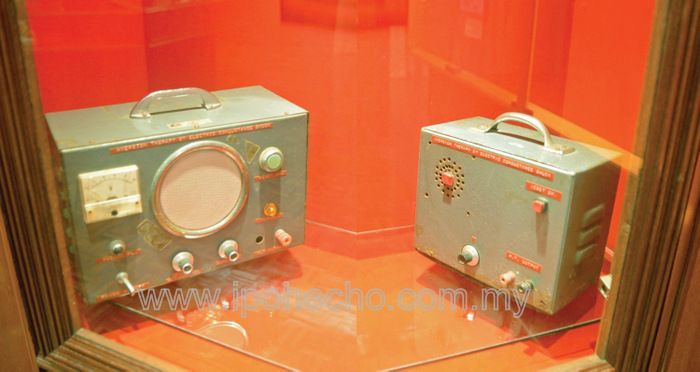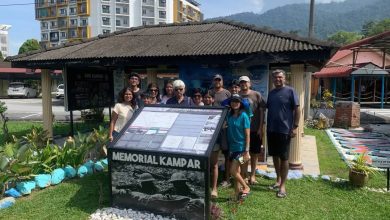History of the Federal Lunatic Asylum (HBUK)


An increase in the number of mental patients in Malaya, notably in many of the Federated Malay States, towards the end of the 19th century, led to the British Government’s suggestion to establish a Central Lunatic Asylum for all the Federated Malay States.
In 1906, a piece of land was identified in Tanjong Rambutan, Perak for that purpose. But the reason why Tanjong Rambutan was chosen was never really known. In building the asylum, the chosen location had to fulfil three requirements: First, it needed to be a large area of government land in a healthy district as it was intended, from the beginning, that the asylum would have various forms of agricultural activities and poultry rearing, hence the large area needed. Secondly, it had to be on a main railway line, to be easily accessible by the railway which connected most of the states. Perak, fulfilled these requirements. Last but not least, the site had to be near a big town. Tanjong Rambutan was only a small town far away from the bustling Ipoh and Kinta Valley, but according to the Director of Public Works, was a town with important tin mining business.


Dr William Frederick Samuel, the first Medical Superintendent of the asylum, described the 573 acres of land reserved for the asylum as laden with blukar (thicket) and swamp. The initial plans and budget were estimated to be at around £96,000 and the approved drawings and plans were obtained in July 1906. It took five years to be completed. The setup of the asylum was planned to accept all the 250 patients from the Taiping Lunatic Asylum. It was originally planned to open in July 1911 but due to an outbreak of cholera, which many had succumbed to in the Taiping Lunatic Asylum, it was delayed until November 1, 1911. Dr W.F. Samuel, who was appointed the Medical Superintendent, was assisted by an Assistant Surgeon, two dressers, a clerk and a storekeeper. Dr Samuel was the Medical Superintendent of the asylum for more than 21 years, in two spells, from 1910 to April 1929 and from December 1929 to 1931.
In the early stages of development, the asylum was a psychiatric institution that housed three male wards and one female ward which were separated by a kitchen. In 1922, the name of the asylum was changed to the Central Mental Hospital and was again changed to Hospital Bahagia Ulu Kinta (HBUK) in the early 70s, thus portraying a more positive image regarding the advancement in psychiatric treatment. Today, HBUK is one of the largest among the four psychiatric institutions in Malaysia, the others being, Hospital Mesra Tampoi, Johor; Hospital Sentosa, Sabah and Hospital Umum, Sarawak.
The Tanjong Rambutan buildings provide services ranging from administration to rehabilitation activities such as vegetable and fruit farming, aquaculture and poultry farming. These activities, which the patients still carry out today, covers about 300 acres of the total area. The hospital houses 78 wards, 53 for males and the remaining 25 for females. All the original buildings are still being used by the hospital although some of them do not function as they were originally designed. For example, one of the original male wards has been converted to be one of the two kitchens the hospital now has.
Today, the hospital doesn’t only offer psychiatric treatment for both in-patients and out-patients but also provides a variety of other services such as physiotherapy, x-ray, dental and also basic healthcare just like any other hospital. Patients are mostly from the Ulu Kinta district and family members of staff. The hospital also has facilities for recreation such as golf and a large field that can cater to sporting events. These are available to the public by application in writing to the hospital administration.


Psychiatry Museum
Apart from its rich 108-year history, the hospital also has its own psychiatry museum which houses a range of medical apparatuses which illustrates the types of treatment used prior to modern-day psychiatric treatment. These include the Deep Insulin therapy (1946), Electroconvulsive therapy (1947) and Aversion therapy. The museum also includes a wide variety of items ranging from basic to more advanced medical tools. On display are wound dressing tools, different coloured hospital gowns which indicated the category of mental illness of the patients, straight-jackets, an early wheelchair, a dental chair and items used in patients’ rehabilitation.
One of the many items that stood out in the collection was the ‘Tell Tale Clock’ which was used to monitor staff who worked on night shifts. They were required to wind the hourly knob located on the wall in each of the ward which was then recorded by the ‘Tell Tale Clock’ placed at the Medical Superintendent’s Office. This was a measure to prevent attendants from falling asleep or leaving the ward while on duty. If caught sleeping on the job or leaving the ward while on duty, attendants would be fined up to RM5 or alternatively, required to cut the grass at the female ward.


The hospital’s psychiatry museum, however, is not open to the public. Potential visitors are required to write in to the hospital stating their reasons. Permission is dependent upon approval from the hospital director.
Chris Chong


